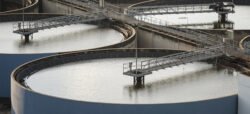
Clearstream Wastewater Treatment System
Clearstream Wastewater Treatment System: An In-Depth Analysis for Environmental Professionals
Introduction: The Importance of Advanced Wastewater Treatment Solutions
As global populations surge and urbanization accelerates, the demand for effective wastewater management has never been more critical. Wastewater, if not treated properly, can pose significant threats to public health, aquatic ecosystems, and water resources. According to the United Nations, an estimated 4 billion people worldwide experience water scarcity for at least one month a year, making efficient wastewater treatment systems like Clearstream invaluable. This article delves into the Clearstream Wastewater Treatment System, overviewing its design, functionality, benefits, and common applications, while addressing the complexities and pain points associated with wastewater management.
Understanding Clearstream Wastewater Treatment Technology
1. Overview of Clearstream Systems
Clearstream Wastewater Treatment Systems employ a decentralized treatment model that utilizes advanced biological and physical processes to treat municipal and industrial wastewater. Unlike conventional systems that are heavily reliant on large treatment plants, Clearstream’s innovative approach allows for localized treatment, which can be particularly advantageous for rural areas or locations with less access to infrastructure.
Key Features of Clearstream Systems:
- Modular Design: Clearstream units are scalable and can be adapted to meet varying treatment needs, from single-family homes to larger communities.
- Reduced Footprint: Their compact design makes them suitable for properties where space is limited.
- Energy Efficiency: Many Clearstream systems are designed to operate with low energy input, reducing operational costs.
2. The Treatment Process: Step-by-Step
The Clearstream treatment process consists of several stages, each integral to ensuring that treated water meets environmental regulations and is safe for discharge or reuse.
-
Screening: The first step removes large debris, such as plastic and rags, to protect the downstream treatment components.
-
Primary Treatment: In this phase, solids settle to the bottom of the tank, creating primary sludge. This step typically removes about 50-70% of total suspended solids (TSS) and biochemical oxygen demand (BOD), according to data from environmental engineering studies.
-
Secondary Treatment: Here, biological processes kick in, utilizing aerobic and anaerobic bacteria to break down organic matter. Research published in leading environmental engineering journals indicates that secondary treatment can achieve 90-95% removal of BOD and TSS.
-
Clarification and Disinfection: After secondary treatment, the clarified effluent is treated with UV light or chlorine to eliminate pathogens, ensuring compliance with health regulations. Studies have shown that UV disinfection is particularly effective at reducing coliform bacteria to safe levels.
- Effluent Disposal/Recycling: The final treated effluent can be safely discharged into water bodies, or it can be reused for irrigation and industrial purposes, aligning with sustainable water management practices.
3. The Advantages of Clearstream Systems
Clearstream Wastewater Treatment Systems offer numerous benefits that address common pain points in wastewater management:
-
Environmental Compliance: With stringent regulations governing wastewater discharge, Clearstream systems help facilities comply with EPA standards, minimizing the risk of fines or legal issues.
-
Cost Efficiency: Due to lower capital costs associated with installation and reduced operational costs, Clearstream solutions can save communities significant expenditures over their lifecycle.
-
Flexibility and Scalability: The modular design allows for easy expansion as demand increases, making it an appealing option for growing communities or businesses.
- Reduced Environmental Impact: Studies indicate that more localized treatment systems like Clearstream can reduce the carbon footprint associated with transporting wastewater to centralized treatment plants.
4. Addressing Common Concerns and Misconceptions
Despite their advantages, potential users of Clearstream systems may have lingering concerns or misconceptions. Here, we address some frequently asked questions:
Q: Are Clearstream systems easy to maintain?
A: Yes, the systems are designed for low maintenance. Regular inspections and periodic pump-out of sludge are typically sufficient to ensure optimal operation. According to manufacturers, maintenance costs average $200-$400 annually for standard residential systems.
Q: Can Clearstream systems handle varying flow rates?
A: Absolutely! Clearstream systems are designed to manage fluctuations in flow rates effectively. The biological treatment processes can adapt to changes, ensuring consistent performance.
Q: Is the treated water safe for irrigation?
A: When designed and operated correctly, Clearstream systems can provide effluent that meets or exceeds safety standards for irrigation as established by the EPA.
5. Case Studies and Applications of Clearstream Systems
Clearstream systems have been successfully implemented across various sectors, demonstrating their versatility:
Case Study 1: Rural Community in California
A rural California community faced challenges due to aging infrastructure and inadequate wastewater treatment. Implementing a Clearstream system enabled them to treat 100,000 gallons of wastewater daily, leading to a 78% reduction in compliance violations, according to reports from local environmental authorities.
Case Study 2: Industrial Facility in Texas
An industrial facility in Texas required a solution to treat high-strength wastewater. A Clearstream system was installed, leading to an estimated 50% reduction in disposal costs by allowing for internal reuse of treated water, significantly enhancing the facility’s sustainability profile.
Case Study 3: Residential Development in Florida
In a new residential development, Clearstream’s modular units were deployed to manage treatment effectively. The system enabled on-site treatment of wastewater, and residents reported reduced utility costs and lower environmental impact, as highlighted in the community’s sustainability report.
Conclusion: The Future of Wastewater Management with Clearstream
As urban areas face increasing stress on existing wastewater treatment infrastructures, decentralized solutions like Clearstream represent a promising pathway for sustainable water management. Their modularity, energy efficiency, and low maintenance needs position them as leading solutions to contemporary wastewater challenges. With advancements in technology and growing awareness regarding the importance of sustainable practices, Clearstream systems are well-equipped to meet the evolving needs of municipalities and industries alike.
In conclusion, as environmental professionals and facility managers consider their wastewater treatment options, Clearstream presents a compelling mix of efficiency, reliability, and regulatory compliance. As the global community pivots toward sustainable practices, systems like Clearstream not only address immediate wastewater challenges but also pave the way for a more resilient water future. Embracing these advancements is not just a necessity; it is an opportunity for sustainable development and enhanced water resource management.

